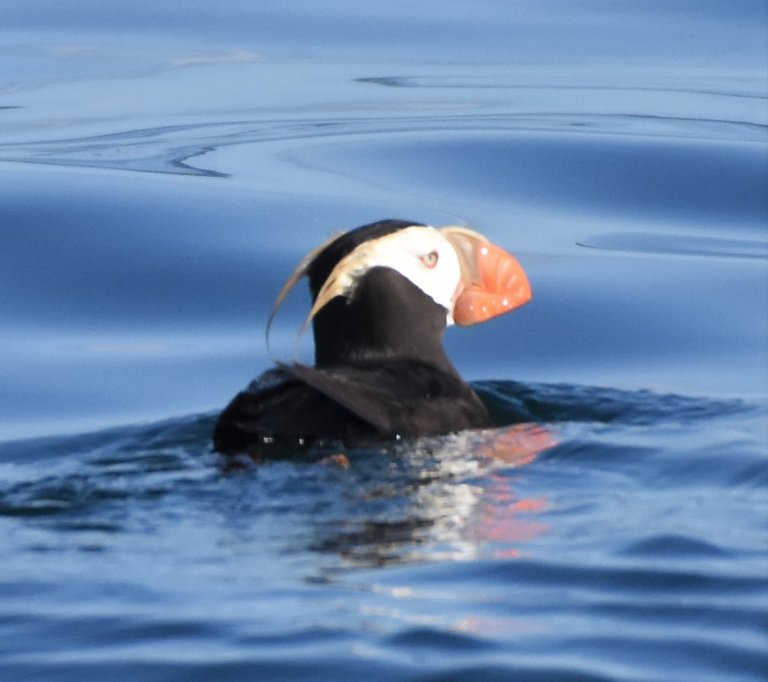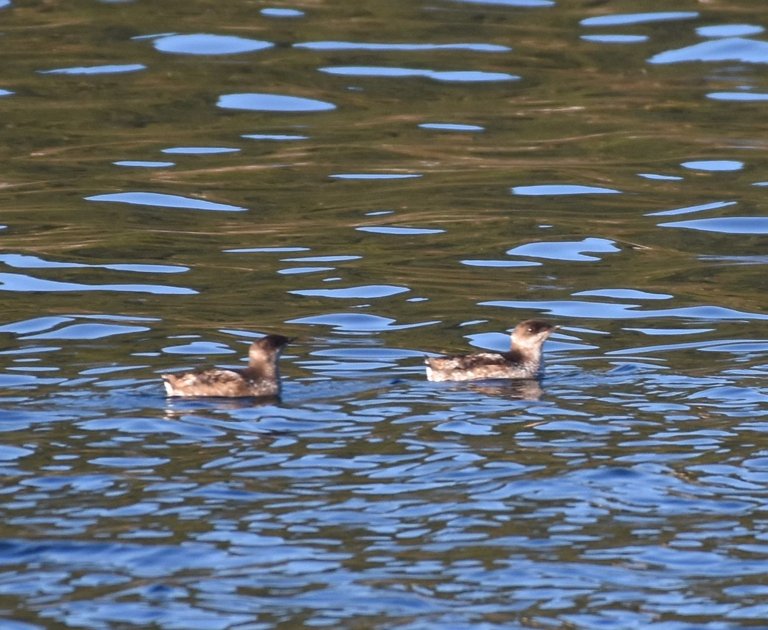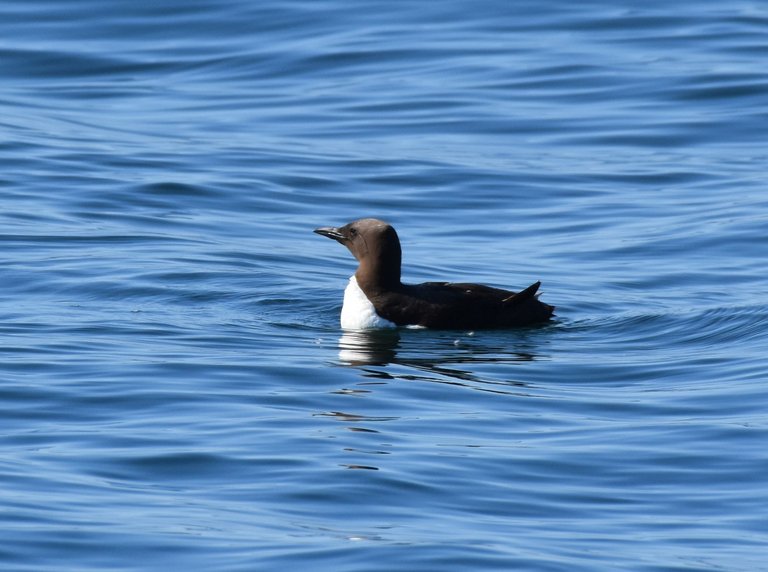Tufted Puffin Fratercula cirrhata
Penguins are funny. They stand up on their back feet and flap their flippers comically, and have even had full-length feature movies made about them. In the Northern hemispher there are no penguins, but in their ecological niche there are birds in family Alcidae. This family includes Auks, Murres and Puffins. In Washington State where I live we have several species of "alcids."
The Tufted Puffin shown above is in a steep population decline in Washington. The reasons are uncertain, but it likely is at least significantly due to reduced populations of the fish they prefer to eat.
Rhinoceros Auklet Cerorhinca monocerata is a fairly close relative of the puffins. It also breeds in a burrow in grassy areas, but seems more flexible in its choice of food species, and has been increasing in numbers in recent years in our area.
Marbled Murrelets Brachyramphus marmoratus is an endangered alcid species in our area. It has a very uncommon breeding strategy. It builds its nests on the horozontal branches of old growth trees often far from the sea. The branches have to be at least 8 inches (22 cm) in diameter, and are usually very high up on the tree. The parents take turns sitting on the eggs, and once hatched the young bird are fed in the night by their parents who have to fly long distances to and from feeding areas. The chicks first flight has to reach all the way from the nest to the sea, sometimes up to 40 miles (66 km) or more!
Common Murre Uria aalge is a striking black-and-white alcid, that breeds on rocky cliffs of offshore islands. Their eggs are shaped so that if they roll, they roll in a circle, to keep them from rolling off the cliff if moved.
Pigeon Guillemots Cepphus columba is one of our alcids that is well known to many urban dwellers, because it can breed in burrows on the shoreline or on man-made structures like piers and bridges. Like many alcids it has a breeding plumage far different from its winter non-breeding plumage.
Here is a winter plumage Pigeon Guillemot.
So although we don't get to see Penguins without a trip to the zoo, or a long trip to the southern hemisphere, we do get pretty cool alternatives close to home.





